If you want to know about the landscape garden or Introduction of landscaping and its role or terminology used in landscape, please click the link.
Japanese landscapes are renowned for their natural beauty and aesthetic appeal. From the rugged coastlines of the country’s many islands to the serene gardens and temples of Kyoto, Japan’s landscape is characterized by a unique blend of rugged natural beauty and carefully cultivated spaces.
1) Evolution of Japanese garden
- The Japanese garden evolved from the landscaping of gardens, and it developed into an original art form to become an important part of the Japanese culture.
- History of the Japanese garden goes back to around 7th century and the early documents about the design of gardens are from approximately the 10th century.
- The Japanese gardens, have an ancient history influenced by Shinto, Buddhist and Taoist philosophies.
- They became the philosophical foundation for the original design of the Japanese art of space in the form of gardens so as to bring a spiritual sense to the gardens.
- From the ancient remains of the rock arrangement (of the AD 5th century) we find likely resemblance in the existing Japanese gardens.
- They are the circular layout of rocks either flat or upright found in Akita and Hokkaido.
- They were used for the spiritual rituals and not designed for as stone arrangement for the beauty of gardens.
- The concept of gardens were yet premature in this period.

- Although these early circular stones or other rocks that are jutting out in the cliff were the objects of worship and prayer for the spirits of nature, such spiritual foundation for the stones continued to sublimate in the later art form of stone arrangement and gardens.
2) Design philosophy
- Designers of the Japanese gardens of different times had extremely sophisticated sense of beauty and aesthetics.
- Respect for: the nature and abstract representations of the utopian world of the time which were derived from the religion and philosophy. Therefore, the Japanese gardens use natural stones, only without any artificial processing.
- The art of Japanese garden is closely associated with the art of architecture and the stone arrangement.
- They are arranged to show many expressions of sometimes dynamic forms and other times extremely subtle and sensitive forms.
- These gardens give many impressions to those who appreciate them and they move people in various ways.
- Contrived out of earth, rocks and water and mantled by carefully chosen growths, the garden expresses an ideal universe within a defined area.
- Shapes of natural mountains, rivers and lakes and the wildernesses of forests are simulated and expressed in a heightened poetic way. It is this refined poetic character that impinges itself on the sensibility of the visitor to the garden
3) Gardens of each era
i) Ancient times, Nara, Heian Period (5th to 11th century)
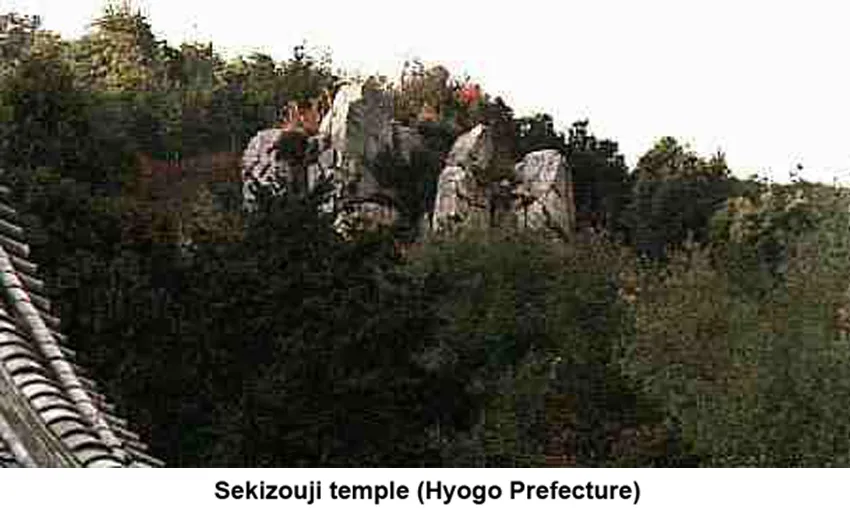
- Circular line stone (Akita Prefecture)
- Sekizouji temple (Hyogo Prefecture)
- Heijyoukyou sakyou sanjyou nijyounomiya garden (Nara Prefecture)
- Moutuji temple (Iwate Prefecture)

Nara Heijyoukyo Sakyo Sanjyo Nibonomiya Garden
ii) Kamakura Period – Saihouji temple (12th, 13th, 14th centuries)
Saihouji temple Garden (Kyoto Prefecture)
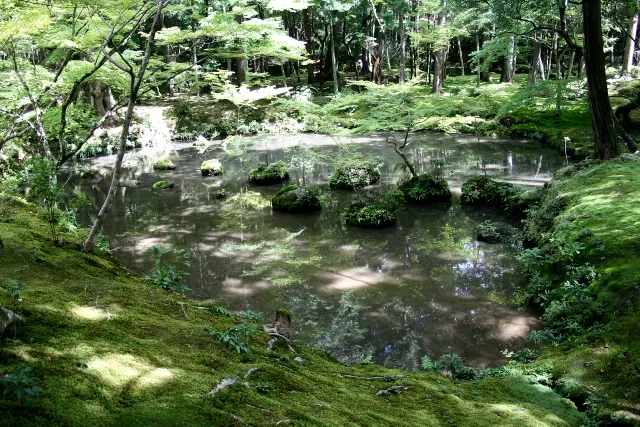
View of “night-stopping” stones which represent the islands boats stopped each night on the journey to paradise
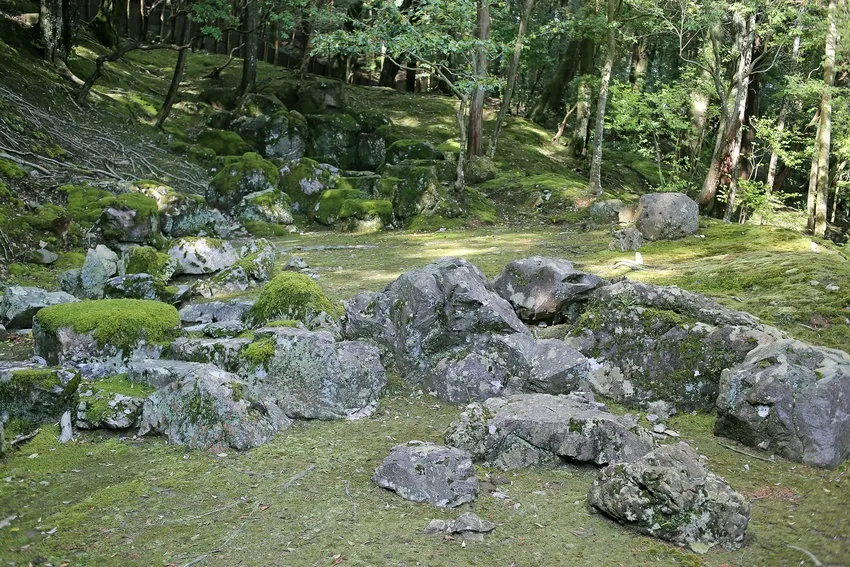
Dry waterfall rock grouping in upper garden
iii) Muromachi Period (15th and 16th Centuries)
- Daitokuji temple Daisenin garden( Kyoto Prefecture )
- Daitokuji temple Ryougenin garden ( Kyoto Prefecture )
- Jisyouji temple (Kyoto Prefecture )

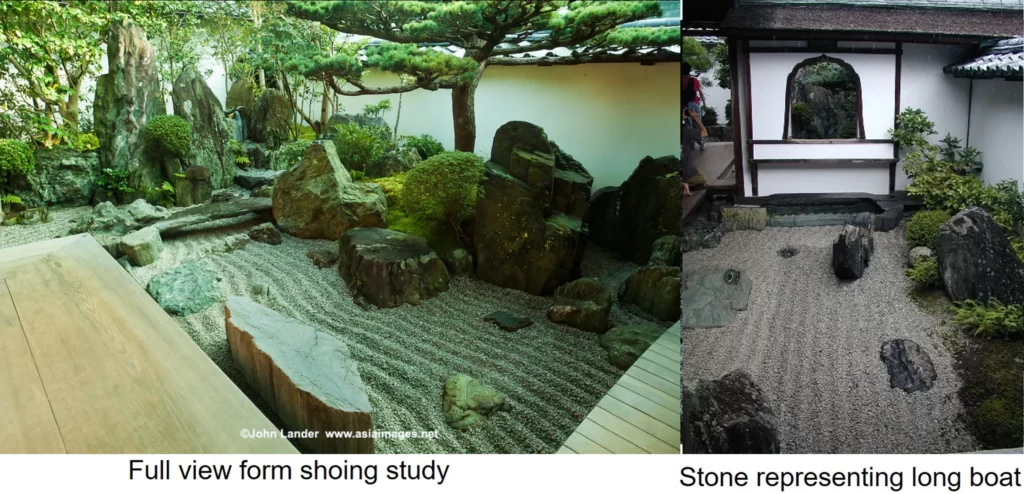
Kyoto Daitoku-ji Daisen-in Garden
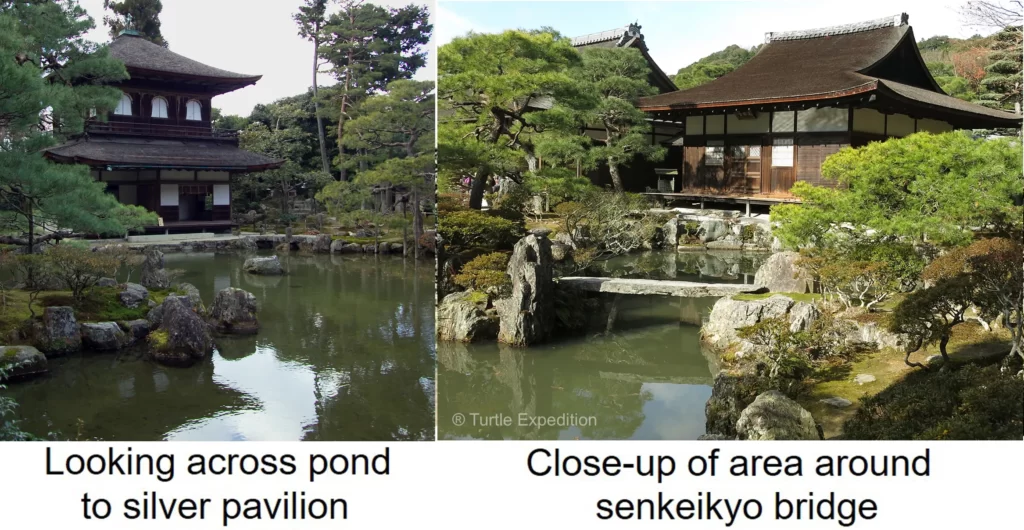
Jisho-ji (Ginkaku-ji or Silver Pavilion Garden)
iv) Edo early days (17th Centuries)
Daitokuji temple Kohouan garden (Kyoto Prefecture)
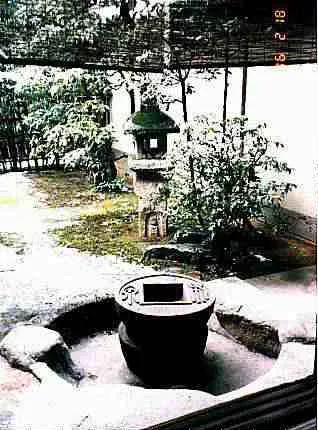
- Fusen-style hand wash basin and Oribe-style stone lantern
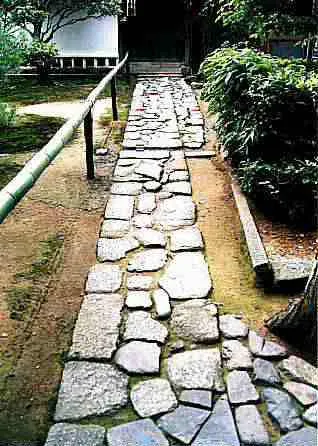
- Approach – Kyoto Daitoku-ji Koho-an Garden
iv) Edo middle (18th Centuries)
Kyoto Knkyu-an Garden
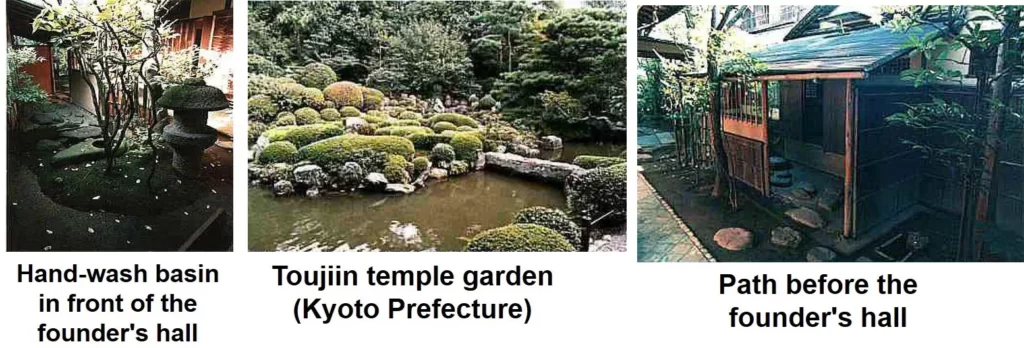
v) Meiji Period (19th Century)
Ichida tairyuusansou villa garden (Kyoto Prefecture)

vi) Modern gardens (20th Century)
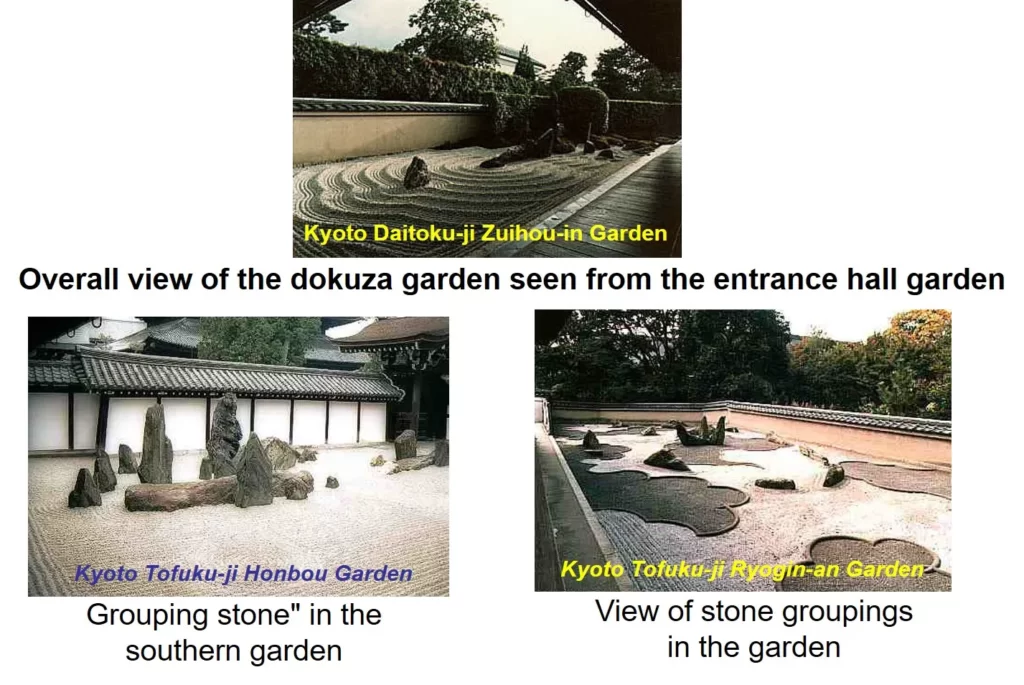

4) Elements in the Japanese style of gardens
- The essential elements to a Japanese garden – water, garden plants, stones, waterfalls, trees, and bridges create the symbolism for Japanese style of garden.
i) Rock (Ishi)
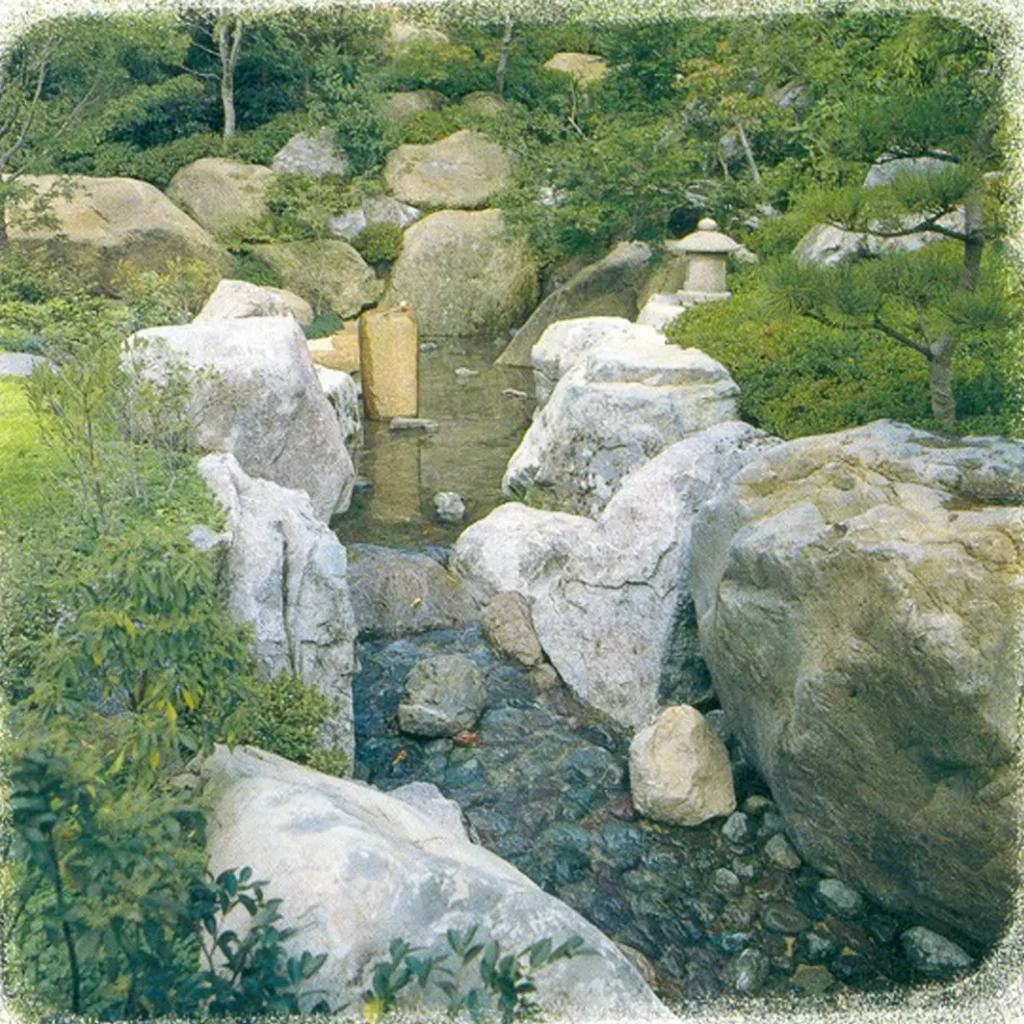
- Rocks are the bones of the Japanese garden. If you have properly placed your stones in the garden, the rest of the garden will lay itself out for you.
- The basic stones are the tall vertical stone, the low vertical stone, the arched stone, the reclining stone, and the horizontal stone. Two similar stones (e.g., two tall verticals or two reclining stones), one just slightly smaller than the other, can be set together as male and female, but usual threes, fives, and sevens are used.
- When setting steppingstones, they should be between one and three inches above the soil, yet solid underfoot, as if rooted into the ground. They can be set in straight lines, offset for left foot, right foot or set in groups of twos, threes, fours, or fives (and any combination thereof).
- The pathway is symbolic of the journey through life, and even specific stones in the path may have meaning. A much wider stone set across the path tells us to put two feet here, stopping to take in the view.
ii) Ornaments (Tenkebutsu)
Lanterns, Stupas, Basins & Bridge Should be used as architectural accents and then only when a point of visual interest is necessary to the overall design.
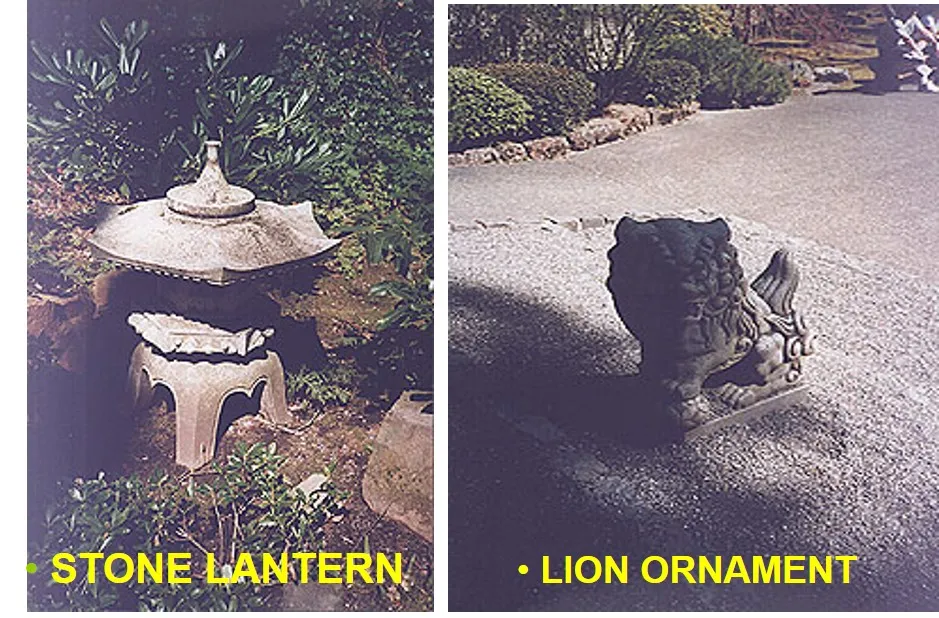
- Originally placed, as a source of light. But now for decorative purposes. There are some up to 18-feet high, called “pagodas.” The pagoda is five stories tall, with each story representing a natural element: earth, water, fire, wind.
- They are placed at the entrance of the garden in order to protect the garden from intruders. Usually there is a male and a female lion at each entrance. These two statues represent the yin and the yang: the two opposing forces: fire and water.

- These fish are called koi.
- They are in the ponds of the Japanese Gardens as a decorative element.
iii) Water (Mizu)

- In the karesansui garden, the raked gravel represents water. Flat river stones, laid tightly together, symbolize a rushing stream.
- In the tea garden, void of stream or pond, water plays the most important role as one stop to perform the ritual cleansing at the chozubachi, or water basin.
- As the water fills and empties from the shishi-odoki, or deer scare, the clack of bamboo on rock helps mark the passage of time.
- Deeper meaning of water in the Japanese garden: The sight and sound of its flow are there to remind us of the relentless passage of time.
- A bridge often crosses the water. Like the pathway, bridges denote a journey. Bridges are symbolic of moving from one world into another, a theme found throughout Japanese art.
- A type of Japanese bridge; this one in particular is called the moon bridge, and it can be found in the Portland Japanese Garden. It goes over the Strolling Pond. These bridges are built with an artistic feeling showing very delicate workmanship.

- A type of water basin known as a deer chaser. There is a hollow bamboo stick which, when it fills up, hits the basin making a sound. This sound supposedly chases the deer away and keeps them from drinking the water.
iv) Plantings (Shokobutsu)

- While plants play a secondary role to the stones in the garden, they are still a primary concern in the design. While the stones represent unchanging permanence, the trees, shrubs, and perennials help to display the passing of each season.
- It is important to note that native plants are used in the garden.
- It is in bad taste to use showy exotic plants.
- Certain trees and shrubs used commonly: pines, bamboo, cherries, maples, etc.
v) Borrowed Scenery (Shakkei)

There are four types of borrowed scenery.
- Far – the distant mountain
- Near – a tree just outside the fence
- High – above the fence
- Low – seen below a fence or through a window in the fence
5) There are five different styles of Japanese gardens
i) Strolling Garden / Hill and Pond
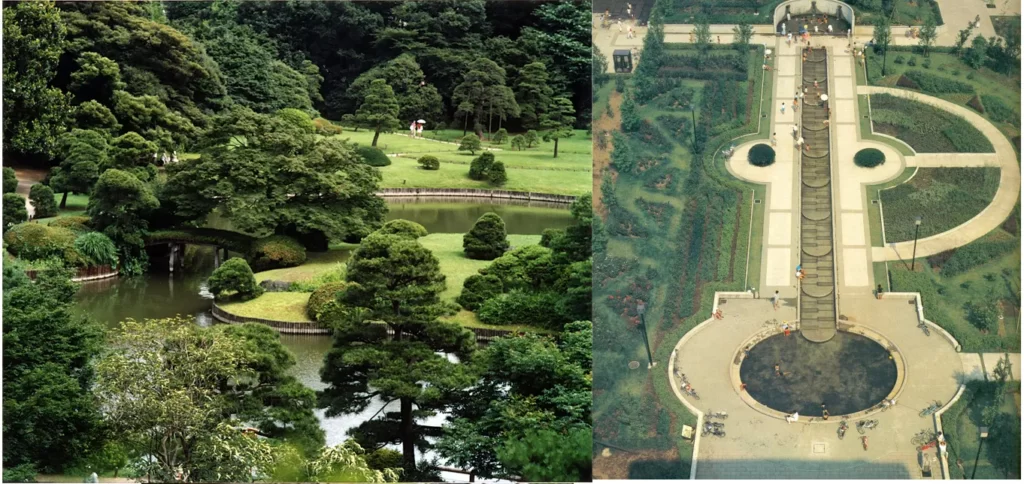
Strolling Garden / Hill and Pond Basic style brought over from China. FORMAL STYLE.
A pond fronts a hill (or hills). The pond can be an actual pond or represented by raked gravel. This style always denotes a mountain area and usually uses plants indigenous to the mountains. For viewing from a path.
ii) Sand and Stone Garden
Sand and Stone Garden is a delicate artistic representation built with great artistic talent and a high level of spiritual involvement.

- It is primarily used as a place for monks to meditate.
- Therefore, mostly found in monk monasteries.
- Sand and stone make up this type of garden.
- It is rectangular with carefully raked white sand that is enclosed by a beautiful tile-roofed plaster wall.
- There are five groupings of fifteen stones arranged in clusters of two, three, and five. At the base of each grouping is growing moss.
- When a person looks at this garden it looks “void.” The sand gives off the sense of space and emptiness.
- The sand clears the visitors’ minds of the outside world, allowing them to make their own interpretations of the garden. Some say that the white sand represents a body of water, and the rocks in the middle of the sand are the islands of Japan.
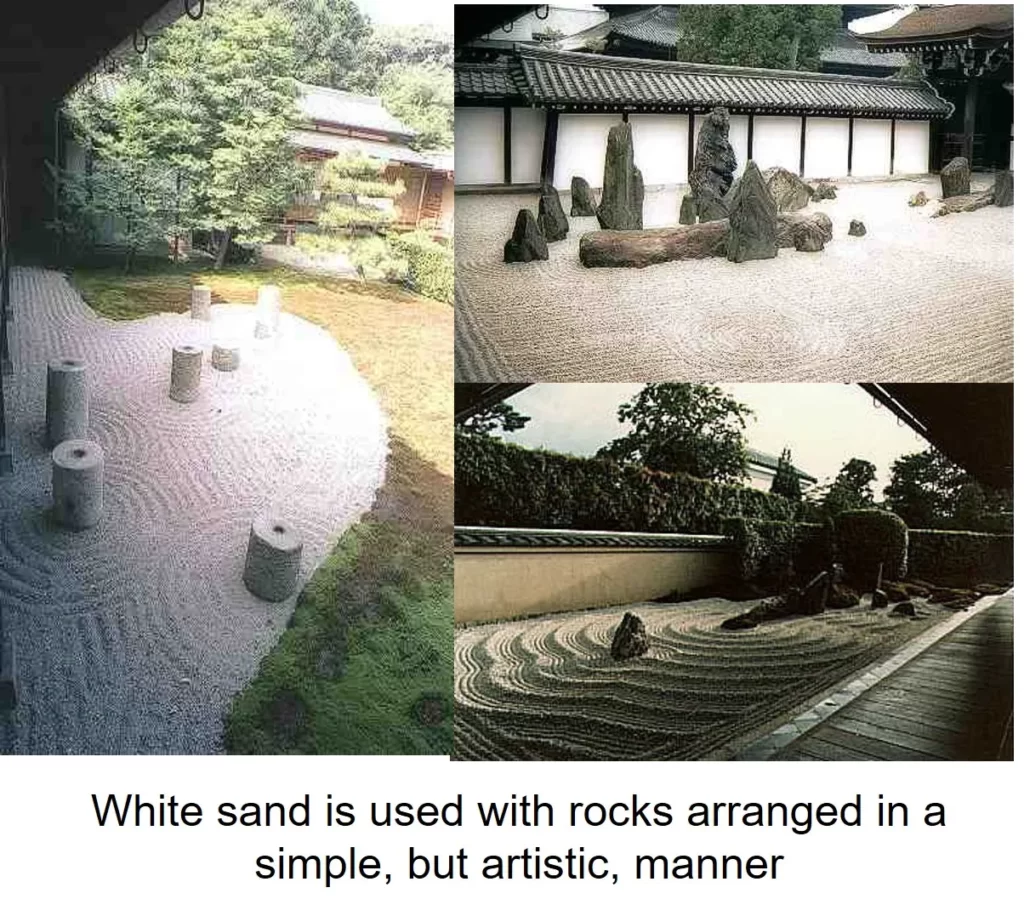
iii) Natural garden

- Rodents and the birds live there, and they are constantly reconstructing it by tearing apart the moss.
- It has a cascading waterfall and pond.
iv) Tea garden

- The Roji (dewy path) is the focus of the garden along with the water basin and the gates. This is the exception to the rule.
- Plantings should be simple to the point of sparse.
- Always strive for a rustic feeling.
v) Flat garden
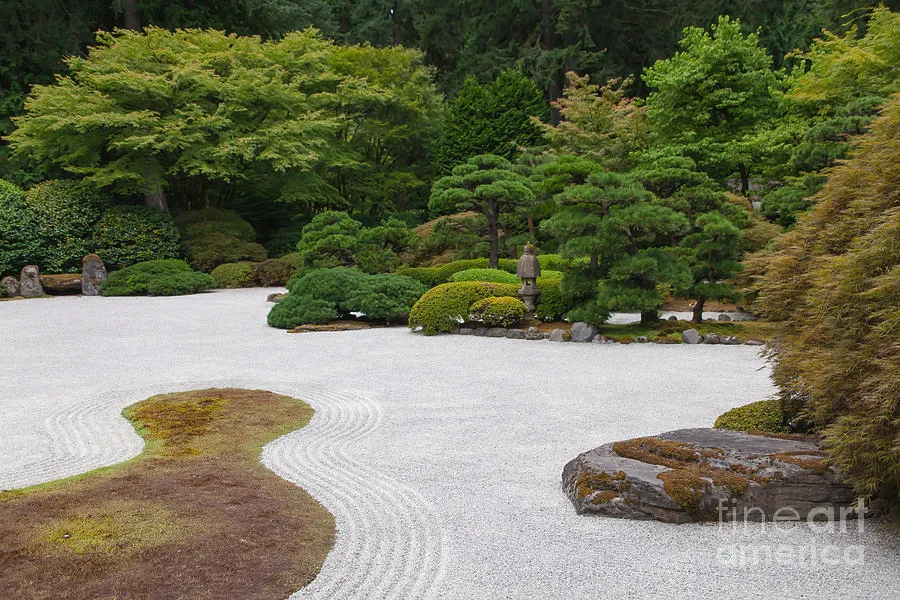
- The flat style stems from the use of open, flat spaces in front of temples and palaces for ceremonies. These are often done in the karesansui style. This is a very Zen style (good for contemplation) and is representative of a seashore area (using the appropriate plants)
- Courtyards are always flat style gardens.
Overall, the Japanese landscape is a unique and fascinating mix of natural and cultural elements that has captivated visitors from around the world for centuries.